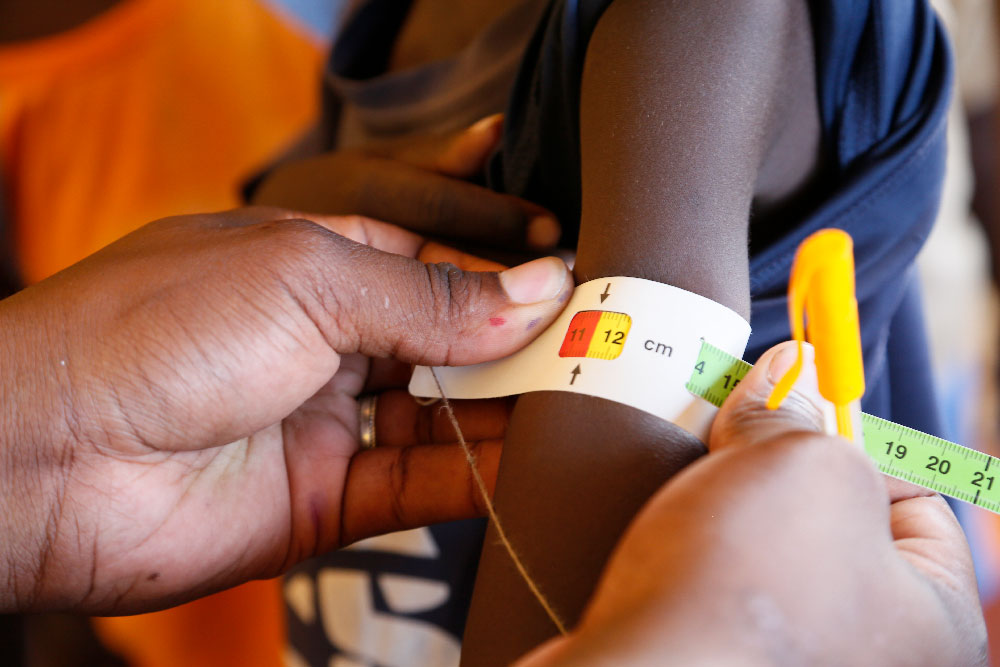A new project promises to generate better dietary and health data for agriculture and nutrition interventions in Africa
- From
-
Published on
15.11.18
- Impact Area
-
Funders
IDRC

Despite significant efforts to address it, malnutrition remains a major impediment to development around the world. According to the 2017 Global Nutrition Report, at least one in three people globally are malnourished. While notable progress has been made in reducing world hunger, two billion people are still not getting all the nutrients they need. Africa has the highest rate of undernourishment, with about 21% of the total population facing chronic food deprivation. The effects of malnutrition are long-lasting as well as severe and include impaired physical and cognitive development, which can prevent individuals, families, communities and countries from reaching their full potential.
To reduce malnutrition, reliable nutrition and health information is an absolute necessity. Nutrition information on such factors as dietary diversity is critical for monitoring humanitarian conditions, tracking progress against the sustainable development goals and informing interventions geared to meet nutrition targets. Such information also enhances accountability and the tracking of progress of work aiming to reduce malnutrition.
However, few nutritional databases are available in developing countries, where the information gaps are slowing down progress, especially in sub-Saharan Africa. The problem of data gaps is exacerbated by the fact that standard ways to collect primary data are extremely costly, more so in remote regions where such data is particularly scarce. Furthermore, it is time-consuming as well as expensive to train enumerators and the information they collect is often unreliable.
The Global Nutrition Report of 2014 highlighted these challenges, noting that since acquiring such data is often expensive and laborious, information is scarce or non-existent in low-income countries. The report further highlighted that traditional monitoring systems such as paper-based data collection and manual data entry are time-consuming and prone to error. This hampers the ability to monitor the nutrition status of populations in real time, which makes it difficult to rapidly respond to nutritional crises.
New project seeks to empower households to record and share their dietary and health data for decision-making
The Food, Agriculture and Natural Resources Policy Analysis Network (FANRPAN) and the International Livestock Research Institute (ILRI) are implementing a project on ‘Improving Dietary and Health Data for Decision-making in Agriculture and Nutrition Actions in Africa’ with funding from the International Development Research Centre (IDRC). This project, launched on 1 Nov 2018, will be implemented in Kenya and one other country in East Africa over the next four years, to 2022.
The project will create a platform using information and communications technology (ICT) both to collect food consumption and health data directly from households and to disseminate practical information to these households. The aim is to record events accurately, cost-effectively and in near-real time by enabling households to collect and submit their own food consumption and child health data directly, which will eliminate delays and costs in using third-party enumerators. . . .
Photo: Measurement of the middle upper arm circumference (MUAC) helps to detect malnutrition in children (photo credit: Russell Watkins/DFID).
Related news
-

Reinventing Kenya’s Snack Future with Dryland Grains
International Crops Research Institute for the Semi-Arid Tropics (ICRISAT)21.11.25-
Nutrition
-
Poverty reduction, livelihoods & jobs
Faces of Impact - Video Feature Story On a quiet backstreet in Mihango, Kenya, the…
Read more -
-

COP30 can enable Greening Plant Nutrition in East and Southern Africa
International Rice Research Institute (IRRI)17.11.25-
Nutrition
Image creditAfrica rice farming by majimazuri21, Pixabay Licence By Jamie Males (republished from …
Read more -
-

A decade of academic and research partnership advances One Health in Vietnam
International Livestock Research Institute (ILRI)13.11.25-
Health
In northern Vietnam, Thai Nguyen province has become one of the most active hubs for…
Read more -
